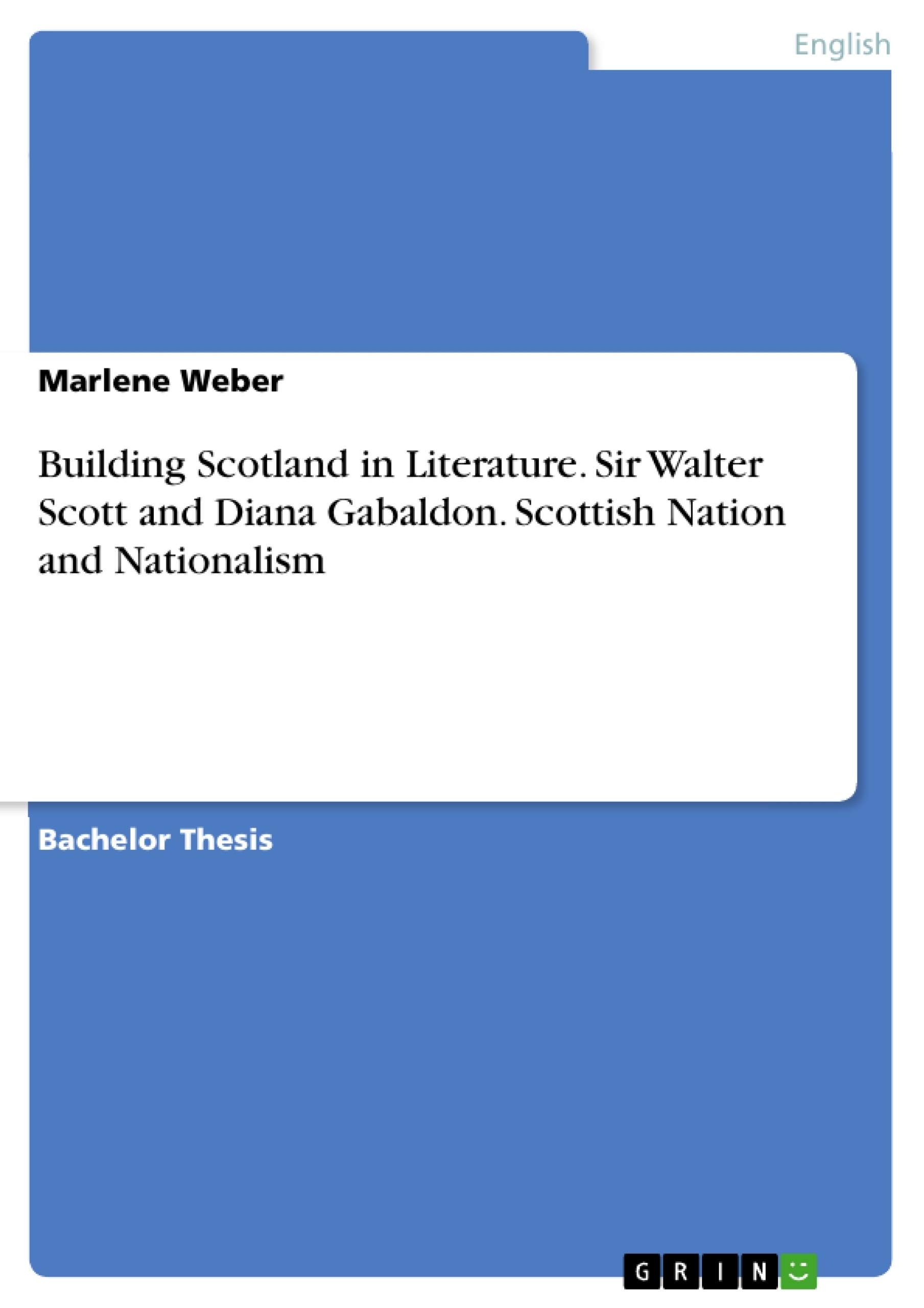The thesis will consider the concept of national identity focusing primarily on the period between 1746 and Scott´s lifetime (he died in 1832); in addition to examining how the manifestations of Scottish identity during this period continue to resonate in mass media today. This period is especially important with regard to the Jacobite Rebellion and its implications after its defeat at Culloden. This lost battle not only ended the Stuart aspirations for the Scottish-English throne, it also marked the start of a brutal campaign against the Highland culture and Gaelic language with the aim of erasing it (cf. Oliver 2011: 320f.).
In retrospect, Scottish nationalism became de facto extinct in the decades that were to follow. In Scott’s early lifetime, people were therefore badly informed about their country’s history, the clan structure diminished and the Lowlands close to the English border were more attached to England than to their own fragmented country. Many Scots immigrated to the colonies across the Atlantic, and those who stayed were busy trying to survive, with little interest in the past or politics (cf. Oliver 2010: 355f.).
The following chapters will outline the development from this fragmented state of affairs towards the deep consciousness of nationality that permeates in Scotland today in addition to how Scott personally contributed to this transformation and how he continues to echo in today’s literature (> Diana Gabaldon´s "Outlander") and popular culture, notably within mass media (> the TV adaptation of the "Outlander"-series on starz) as well as the tourism industry.
Inhaltsverzeichnis (Table of Contents)
- 1. INTRODUCTION.
- 1.1 HYPOTHESIS
- 1.2 OUTLINE
- 2. NATION AND NATIONALISM IN THIS PAPER
- 2.1 NATION AND NATIONALISM IN SCOTLAND..
- 2.2 SCOTT-LAND: STAGING SCOTTISH CULTURE?
- 3. REPRESENTING SCOTLAND IN WAVERLEY
- 3.1 SCOTT'S PALIMPSEST OF SPACE MIRRORING NARRATIVE.
- 3.1.1 Antagonisms and Binary Oppositions.
- 3.1.2 Threat of the Wilderness...
- 3.1.3 War and Destruction........
- 3.1.4 Restoration of Scotland with English help
- 3.2 TRAVELLING SCOTLAND...
- 3.3 CULTURAL ELEMENTS.
- 3.3.1 The Highland Costume..
- 3.3.2 Scottish Food..
- 3.3.3 Gaelic and Scottish English.
- 4. SCOTT'S ECHO TODAY
- 4.1 DIANA GABALDON'S OUTLANDER
- 4.1.1 SPACE AND THE NARRATIVE.
- 4.1.2 TRAVELLING SCOTLAND..
- 4.1.3 CULTURAL ELEMENTS
- 4.2 EXCURSION INTO MASS-MEDIA: TV-ADAPTATION OF OUTLANDER AND ADVERTISEMENTS IN TOURISM.......28
Zielsetzung und Themenschwerpunkte (Objectives and Key Themes)
This paper examines the image of the Scottish Nation as it currently stands and how it was originally created. The author argues that the modern image of Scotland is the result of a literary depiction that was created 200 years ago, specifically by Sir Walter Scott’s novel Waverley; Or, 'Tis Sixty Years Since. The main goal of this paper is to analyze both Scott’s novel and Diana Gabaldon’s Outlander (2005) to determine the extent of Scott’s influence on the modern perception of Scotland.
- National Identity in Scotland
- The Role of Literature in Shaping National Identity
- The Influence of Sir Walter Scott on Scottish Culture
- Comparing Scott’s Waverley and Gabaldon’s Outlander
- The Representation of Scottish Culture in Mass Media
Zusammenfassung der Kapitel (Chapter Summaries)
The introduction discusses the historical background of Scotland, particularly the Treaty of the Union in 1707 and the enduring question of Scottish national identity. It highlights the strong sense of Scottish nationality despite the ongoing debate about independence. The paper's hypothesis is presented, arguing that the modern image of Scotland originates from 19th-century literature, specifically Sir Walter Scott's Waverley. The paper's outline describes the analytical approach, outlining the comparison between Scott's and Gabaldon's works.
Chapter 2 delves into the concept of nation and nationalism. Drawing upon Eric Hobsbawm and Benedict Anderson's theories, it examines the artificial creation of a nation through nationalist movements and the role of print-capitalism in shaping national consciousness.
Chapter 3 focuses on Scott’s Waverley, exploring how he depicted Scotland through narrative and space. It analyzes the novel’s key themes, including antagonisms, the wilderness, war and destruction, and the restoration of Scotland with English help. It also examines how Scott represented Scottish culture, including the Highland costume, Scottish food, and Gaelic and Scottish English.
Chapter 4 explores the influence of Scott's work on contemporary literature and mass media. It examines Gabaldon’s Outlander, comparing its depiction of Scotland to Scott’s portrayal. It concludes by discussing the broader representation of Scottish culture in television adaptations and tourism advertisements.
Schlüsselwörter (Keywords)
This paper focuses on Scottish national identity, the role of literature in shaping national consciousness, and the influence of Sir Walter Scott. It examines the historical context of Scotland's relationship with England, including the Jacobite Rebellion and the legacy of Highland culture. The study also explores the representation of Scottish culture in both literature and popular media, highlighting the enduring impact of Sir Walter Scott's work on contemporary perceptions of Scotland.
- Quote paper
- B.A. Marlene Weber (Author), 2016, Building Scotland in Literature. Sir Walter Scott and Diana Gabaldon. Scottish Nation and Nationalism, Munich, GRIN Verlag, https://www.grin.com/document/379460



